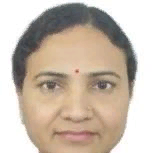
S. R. Nirmala
Work place: Gauhati University Institute of Science and Technology, Guwahati-781014, India
E-mail: nirmalasr3@gmail.com
Website:
Research Interests: Engineering, Computational Engineering, Computational Science and Engineering
Biography
S.R. Nirmala received the B.E. degree in Electronics and Communication Engineering from Jagadguru Murugarajendra Institute of Technology, Chitradurga, India, in 1990. She obtained the M.Tech. degree in industrial Electronics from the National Institute of Technology Karnataka (NITK), Surathkal, India, in 1997; and the PhD degree in Electronics and Communication engineering from the Indian Institute of Technology (IIT) Guwahati, Assam, India, in 2012. She is currently working as Assistant professor in the Department of E.C.E., Gauhati University Institute of Science and Technology.
Author Articles
Significance of Source Information for Text Dependent Speaker Verification
By Archita Hore S. R. Nirmala Rohan K. Das Sarfaraz Jelil S. R. M. Prasanna
DOI: https://doi.org/10.5815/ijigsp.2018.06.05, Pub. Date: 8 Jun. 2018
This work focuses on text dependent speaker verification system where a source feature specifically residual Mel frequency cepstral coefficients (RMFCC), has been extracted in addition to a vocal tract system feature namely Mel frequency cepstral coefficients (MFCC). The RMFCC features are derived from the LP residuals whereas MFCC features are derived from the cepstral analysis of the speech signal. Thus, these two features have different information about the speaker. A four cohort speaker’s set has been prepared using these two features and dynamic time warping (DTW) is used as the classifier. Performance comparison of the text dependent speaker verification model using MFCC and RMFCC features are enumerated. Experimental results shows that, using RMFCC feature alone do not give satisfactory results in comparison to MFCC. Also, the system’s performance obtained using the MFCC features, is not optimum. So, to improve the performance of the system, these two features are combined together using different combination algorithms. The proposed lowest ranking method yields good performance with an equal error rate (EER) of 7.50%. To further improve the efficiency of the system, the proposed method is combined along with the strength voting and weighted ranking method in the hierarchical combination method to obtain an EER of 3.75%.
[...] Read more.Other Articles
Subscribe to receive issue release notifications and newsletters from MECS Press journals